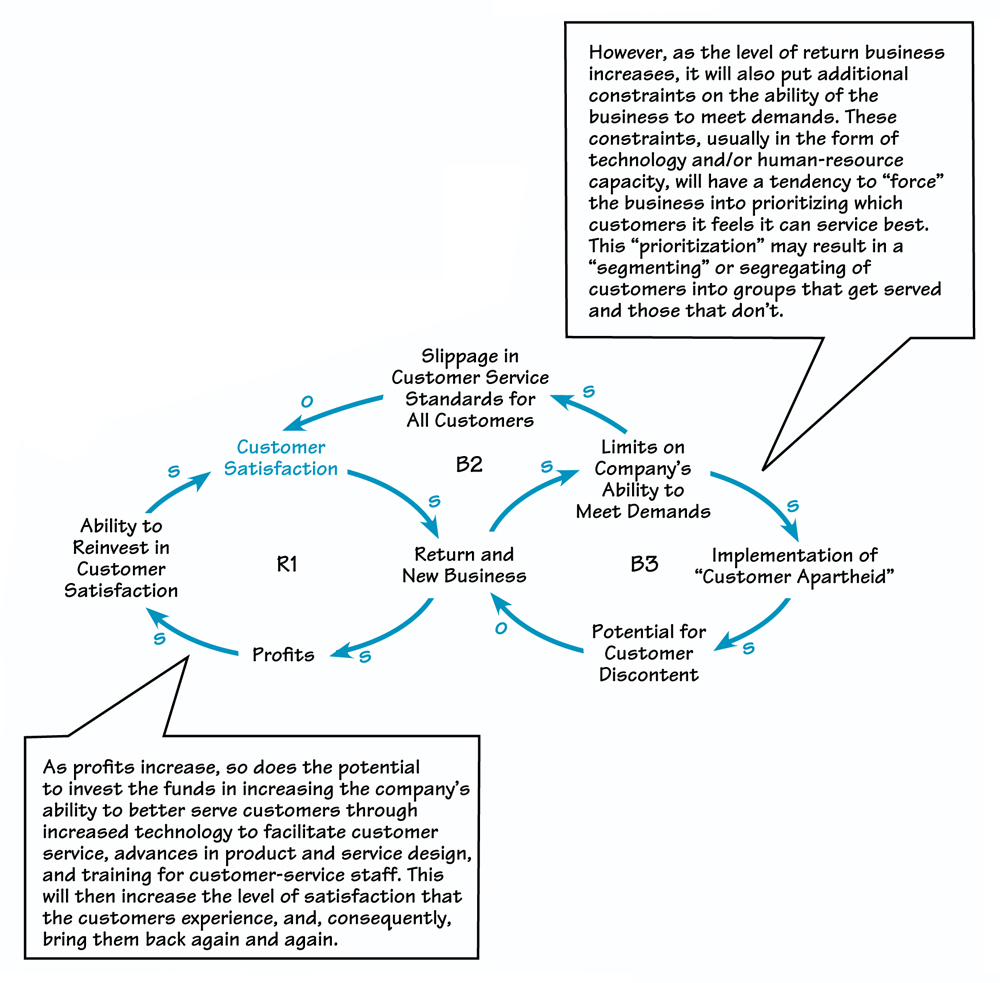In loop R1, increased customer satisfaction leads to more return business and greater profits. Companies can then choose to invest those funds in areas that serve to increase customer satisfaction even further, such as training for customer-service staff and advances in product design.
At the same time, as shown in loop B2, as the level of return business increases, the limits on the ability of the business to meet customer demands grow as well. These constraints, usually in the form of technology or human resource capacity, increase the risk that customer service standards for all consumers will fall. Rather than jeopardize their entire customer base, many companies choose to segment customers by the amount of business they bring in (B3). Through this form of “customer apartheid,” businesses can focus more personalized attention on high-end purchasers.
The downside for retailers who segment customers in this way is that they run the risk of alienating a large percentage of their customer base. The impact on the bottom line may not be noticeable for some time, but customer disenchantment has a way of spreading—even to preferred customers. Less return and new business ultimately means lower profits, which is an unintended consequence that no business wants to confront!
—James Rieley
From Satisfaction to Disenchantment

